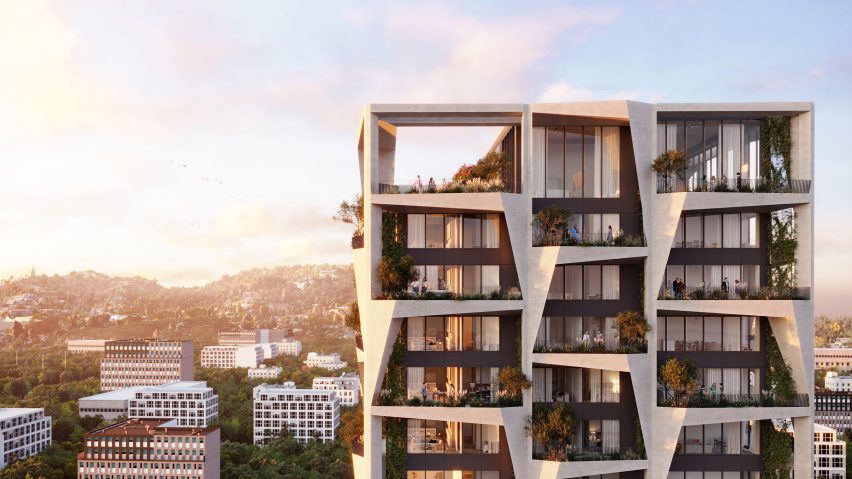
Nabr aims to address "systemic" failures of housing says Bjarke Ingels
Construction productivity "has practically flatlined" over the past 25 years according to Nabr co-founder Bjarke Ingels, who explained how his housing startup intends to revolutionise the sector in an exclusive interview with Dezeen.
BIG founder Ingels, along with former WeWork executive Roni Bahar and former Sidewalk Labs model lab head Nick Chim, established Nabr with the aim of creating a "fundamental transformation of the [housing] industry".
Described as a "consumer-first housing company", Nabr aims to create a series of mass-timber apartment blocks using modular construction.
Nabr to apply design to "entire process" of creating housing
The company, which is starting construction of its first apartment block in San José in early 2022, believes that incorporating design, development and customised financing models will allow it to change how housing is created in the USA.
"Architects or designers are, in a way, the last ones to get involved [in housing] so it becomes very hard to be part of a more fundamental transformation of the industry," Ingels told Dezeen.
"This is basically an attempt to apply design, not just to the final product, but to the entire process that delivers our homes."
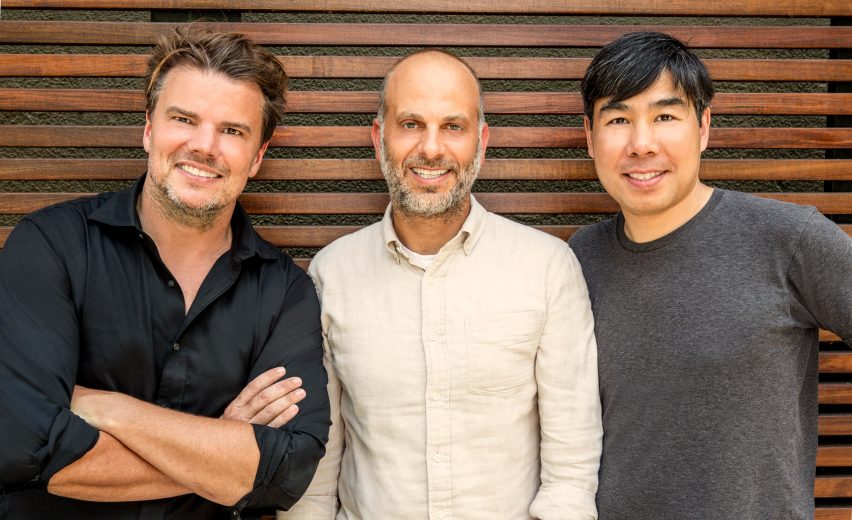
The Nabr housing block in San José will be the first to be built with a cross-laminated timber structural frame that will be adapted for future planned developments.
Customisable apartments will be plugged into this structural shell, according to the company.
"Productivity in the construction industry has practically flatlined"
Nabr also aims to "expand to ultimately be involved in the entire supply chain". It believes that this, combined with its modular, structural system, will help to address some of the failures of the architecture and construction industries to become more efficient over the past quarter of a century.
"The productivity in the construction industry has practically flatlined," Ingels said. "Whereas in manufacturing in general, it's almost doubled over the past 25 years."
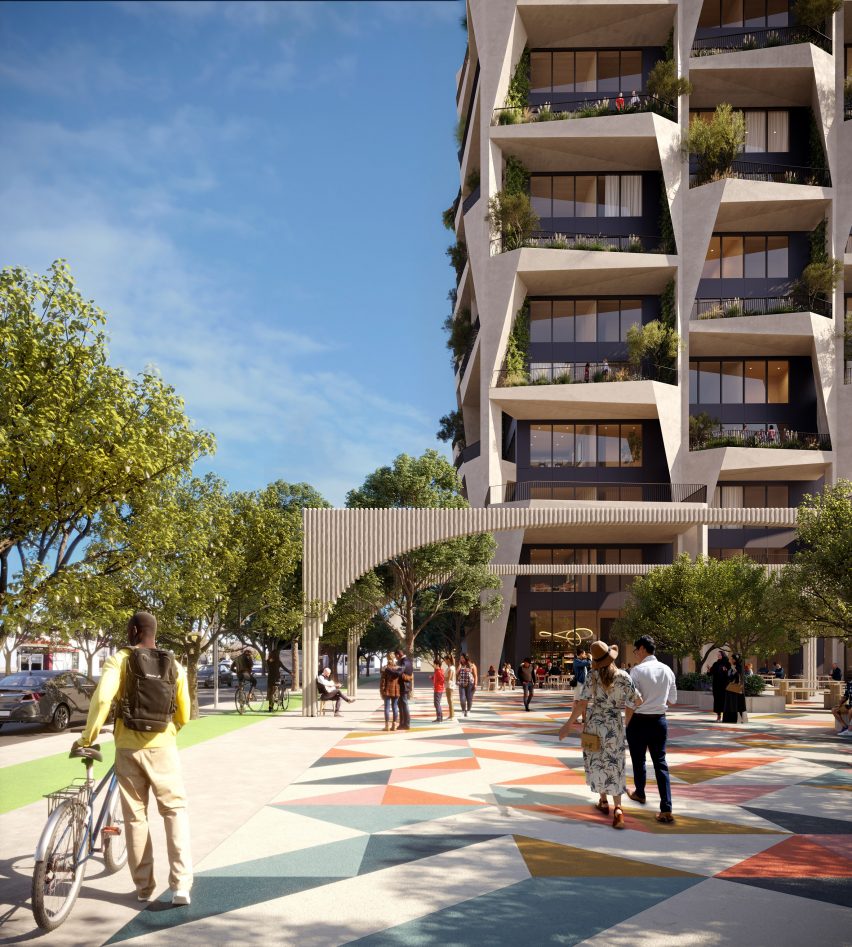
"I know how hard my colleagues and I are working, so there seems to be something systemic," he continued.
"What we've tried to do with Nabr is to address that systemic inability to increase returns in terms of quality, environmental performance and attainability, that we see in almost every other sector but our own."
Nabr turning housing into a "consumer-facing product"
The founders describe Nabr as a "product-driven company" and believe that by thinking of apartments as products, they can transform housing in a similar way to how Apple's iPhone revolutionised the smartphone industry and Tesla is transforming the electric car industry.
"Unlike classic development, we're here to develop and refine and define architecture as a consumer-facing product," said Ingels.
"It's so demotivating or almost paradoxical that in almost all other fields, the things that we make many of have become better and better quality," he continued.
"What happens when we think about residential architecture as a product, where you have different product lines?"
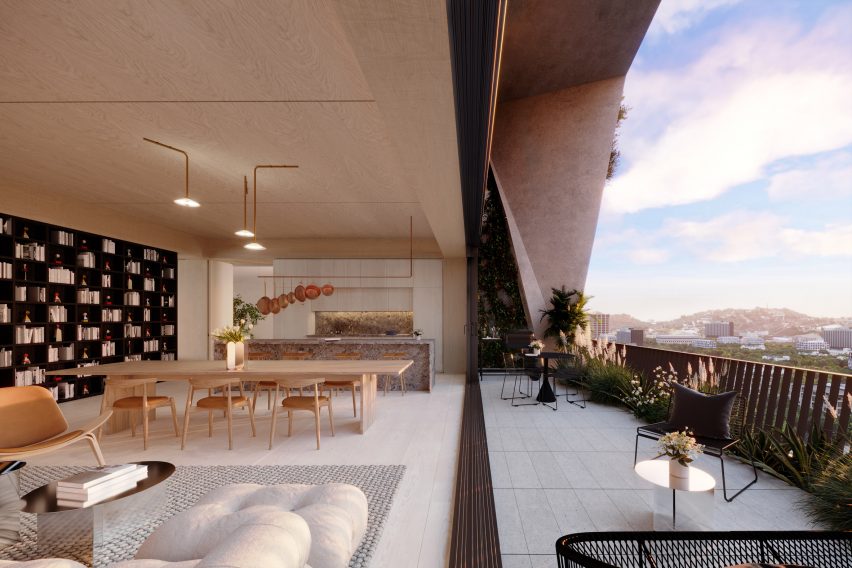
Although Nabr is aiming to create "middle-income housing", its first apartments in San José will have "prices starting in the high $700Ks". Named SoFA One, the block will have 125 homes.
"For the initial offering for the product, we're really coming in at the top of the market from a price point, but I would say substantially better product than any offering in the market," said Bahar.
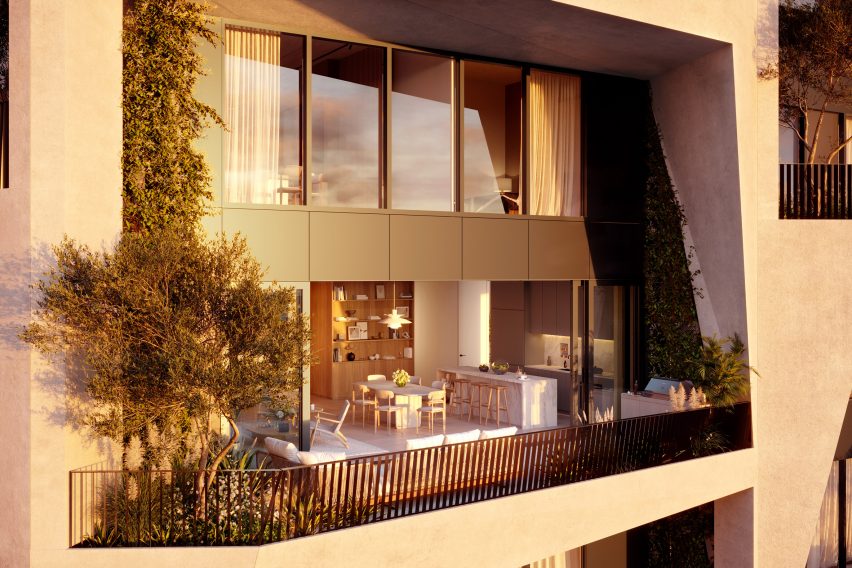
He explained that this initial housing development is the first stage in its plan and that over time, the company will aim to improve its processes to reduce the cost of the housing it offers.
"The Tesla Roadster cost $98,000 and it can only go 100 miles, but it was an interesting car," Bahar said."But there's a limit of how many of those you can put in the market. So we have to hit the superior performance for that experience and then we will figure out how to get to a Model 3 over time."
BIG will refine the design with each apartment block, with the aim of making improvements to functionality and construction.
"We will evolve and expand to apply this kind of compounded improvement and innovation that otherwise never happens for an architect," said Ingels.
"Normally with each building once we're done with it, we can register everything that we could have done better, and then say, well, too bad, because now we're doing something else."
Ingels is the founder of BIG, one of the world's best-known architecture studios. Previous housing projects by the studio include a prefabricated timber housing block in Stockholm designed to look like a "manmade hillside" and an affordable housing development in Copenhagen made up of prefabricated modules.
The studio is also working to create the world's "largest neighbourhood" of 3D-printed homes in Austin.
Read on for an edited transcript of the interview with Ingels and Bahar:
Tom Ravenscroft: How does Nabr differ from other housing companies?
Bjarke Ingels: Nabr is basically an attempt to apply design, not just to the final result, but to the entire process that delivers our homes. Because architects or designers are, in a way, the last ones to get involved [in housing] so it becomes very hard to be part of a more fundamental transformation of the industry
I think one of the things we've seen during the pandemic, and this whole project was sort of conceived during the pandemic, is that the primary path to homeownership in the United States went from work to inheritance.
I think another thing that struck was that in cities in the United States, it takes the median income person 27 years to save up to 20 per cent downpayment on the median-priced home. That means that for the increasingly large middle class, the idea of getting to own your own home is becoming less and less attainable.
It's so demotivating or almost paradoxical that in almost all other fields, the things that we make many have become better and better quality. At a lower cost, and this is true for, you know, computers and washing machines and toys. They are becoming higher and higher quality at a lower and lower cost. But this is not true for our homes.
And then maybe one last thing that we've seen is that when it comes to sustainability, the environmental performance of the buildings that we make, as an architect, you can propose certain products that are available on the market, you can also design with certain principles.
But what you really need is the possibility of compounded innovation – growing bargaining power with the different manufacturers that provide the different products that end up becoming the constituent parts of the buildings that we make. This means that you can actually not just specify the best available currently in the marketplace, but through partnerships, you can push the boundaries and create better and better products.
So it was basically this idea of thinking about residential architecture as a product, where you have different product lines.
Tom Ravenscroft: So that's three advantages. Picking up on just the first one, you say architects are the last ones to get involved. So the aim of this is to get involved earlier.
Bjarke Ingels: Yes, actually to expand to ultimately be involved in the entire supply chain. All the way through to facing the consumer.
It is a product-driven company. Unlike classic development, we're here to develop, refine and define architecture as a consumer-facing product. In the first product offering, we will make architecture at a quality and environmental performance, functional and aesthetic performance, that vastly outcompetes anything that's out there today.
But also we will continue to evolve and expand to apply compounded improvement and innovation. That otherwise never happens for an architect, because each building we can register everything that we could have done better, and then say, "well, too bad, because now we're doing something else."
Tom Ravenscroft: So you are identifying a failure of the whole architecture industry. Do you think there's been a failure of architecture over the past 50 years to improve itself?
Bjarke Ingels: The productivity in the construction industry has practically flatlined. Whereas in manufacturing in general, it's almost doubled over the past 25 years.
I know how hard my colleagues and I are working. And I know that our competitors are as well. So there seems to be something systemic. And I think what we've tried to do with Nabr is to address that systemic inability to increase returns in terms of quality, environmental performance and attainability, that we see in almost every other sector, but our own.
Tom Ravenscroft: This seems like a very lofty aim. Is it achievable?
Roni Bahar: Absolutely. We can't think of real estate and solutions in a very short time span, you have to look over time. What systematic changes need to happen over a long period of time?
So when we looked at this, we said: "how do we get to a goal where we can provide the highest quality product for middle-income housing?" We need to start creating a process that's going to have certain phases to it, that in the long term, we can really change that trajectory. And that's, that's the purpose of it.
When you look at products, that have really been transformational and change how we feel or do things, I like to use Tesla and an iPhone.
Nobody cared about an electric car – there's been a lot of companies failed at getting electric cars going – people only cared about the electric car when it outperformed a gasoline car. And it was beautifully designed, it was a desirable product and an experience, right. And even though it started as a premium product, they reinvested and put capital into it and they were able to get to mass production and elevate the entire industry.
Tesla is never going to make enough cars for everybody. But it made it desirable. With the iPhone, it's the same thing.
So we are creating an unbelievable quality product and starting at the top of the market with it. For us, we're competing against single-family homes. So we need to create a product that is better than being in a single-family home. We can build a product that is superb, and quality for people who care about sustainability, who would want to have the kind of technology not only in an experience but understand what we're doing. And then we can build the tools to then take it to other places and create more product lines.
Tom Ravenscroft: This all sounds very good, but a lot of people have tried this before. So what actual things, like physical things, make this different?
Roni Bahar: First thing is, the failure we've seen before is that people try to do too much in too many places. They didn't focus on one market. That's the first.
Also, they sold directly to developers first, which means they're in the developer's business, which means the developer calls the shots. You are already in that developer system, you're in the developer system.
We're going straight to consumers. Once we prove that we can deliver the product then we can go and work with developers. So these are fundamentally important things.
Tom Ravenscroft: So do you have your own land?
Roni Bahar: We've raised the capital, we acquired land, not us, we did it through a separate vehicle from the company that buys land, we provide the service of entitlement design, development and sales.
Tom Ravenscroft: So the core idea is that you are in control of the whole process, the whole system, therefore, you can change the system by not being in it, is that right?
Roni Bahar: Yes. The last point would be that we're not tied to a specific product, we regionalize the product based on the supply chain and partner with that supply chain to improve their product.
We're using CLT on the West Coast. CLT doesn't work in Miami because of humidity and other reasons. So you have to create different products for different price points for different geographies.
Tom Ravenscroft: So tell me about the design of the first buildings that will go up on the West Coast. What do the actual buildings look like?
Bjarke Ingels: What we've tried to do in a way we've tried to learn from the things we've been involved in over the past two decades.
What we really can do to increase quality and lower cost is to be very smart about repetition. So, what we've developed is this building system that's primarily cross-laminated timber and has a kind of loft typology.
We are offering two feet higher ceilings than a typical condo, and we have long spans, which gives us flexible floor beds where we can plug in different kinds of finishes. The base building system, like let's say 90 per cent of the building substance, is always 100 per cent the same – like a universal standard.
Then within that, on the interiors, we are creating options that can be basically plugged into this framework.
I am a firm believer in outdoor space, when we did our, our first building in New York, it was kind of a battle to argue that in a residential building, balconies and terraces had value. I think, especially after the pandemic, there's a heightened awareness of the desirability of outdoor space, and we're in California.
So big outdoor terraces really become almost like an additional living room in your home. And those large balconies are designed in such a way that they create the exterior appearance of the building. We have the possibility by creating a small variation to create a unique building appearance of the product from one deployment to the other.
We'll have a growing amount of customisation choices. For the interiors, we'll have three to begin with. And then each time we deploy a new option, we'll aim towards adding more interior offerings.
So you can imagine five years down the line, you could have 20 different kinds of interiors that can effortlessly be plugged into this core platform. We can always respond to the local character to define different kinds of buildings.
Of course, a lot of the work that we're involved in typically, is this kind of extreme one-off projects, like Via, on the west side of Manhattan. They're highly boutique developments for the very high end. The way that developers, architects, engineers and contractors work is that they behave as if they are building each building for the first time.
But they somehow strangely, because of the systemic challenges of the industry, end up pretty much in the same place. So even though everybody's working with all of the challenges and disadvantages of doing something unique every time, they end up with something sort of ordinary.
We want to almost flip it, by being very systematic about trying to maximise the amount of repetition, we actually end up with something that is almost entirely customizable on the inside. And, and always entirely unique on the outside.
Tom Ravenscroft: So modular repetitive homes that have variety.
Roni Bahar: For some reason in the US people think that modular is lower quality. Modular is precision-designed, precision-built, it's a much higher quality.
Tom Ravenscroft: To the finances of this. It sounds like we've got a modular CLT frame with a kind of an interior that can be kind of put on into that and allowing people to have their own creativity. So it's going to be a better product, but is it going to cost equivalent or less?
Roni Bahar: So compared to the market, the initial offering for the product, we're really coming in at the top of the market from a price point, but I would say with a substantially better product than any offering in the market is that's the first thing.
Tom Ravenscroft: Is that the top line for medium-income homes?
Roni Bahar: No that's top of the line. There's no such thing as new construction that exists today for housing condos, that's called middle income, it does not exist. There's no magic wand to get there tomorrow.
That's going to take time. However, what we are doing through our financial offering is lowering the barrier to owning the best quality product. And then as we improve products and systems and create new constraints to get to more middle-income pricing, the financial offering that we've created allows that to kind of catch up over time.
Tom Ravenscroft: So this is the first building block?
Roni Bahar: Exactly the same way that Tesla Roadster costs $98,000. And it can only go 100 miles, you know, but it would be like an interesting car. But there's a limit of how many of those you can put in the market. So we have to hit the superior performance for that experience. And then we will figure out how to get to a Model 3 over time.
The photography and renders are courtesy of Nabr.
Dezeen is on WeChat!
Click here to read the Chinese version of this article on Dezeen's official WeChat account, where we publish daily architecture and design news and projects in Simplified Chinese.